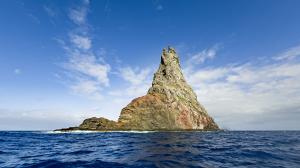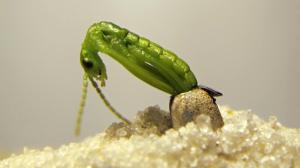Phasmids
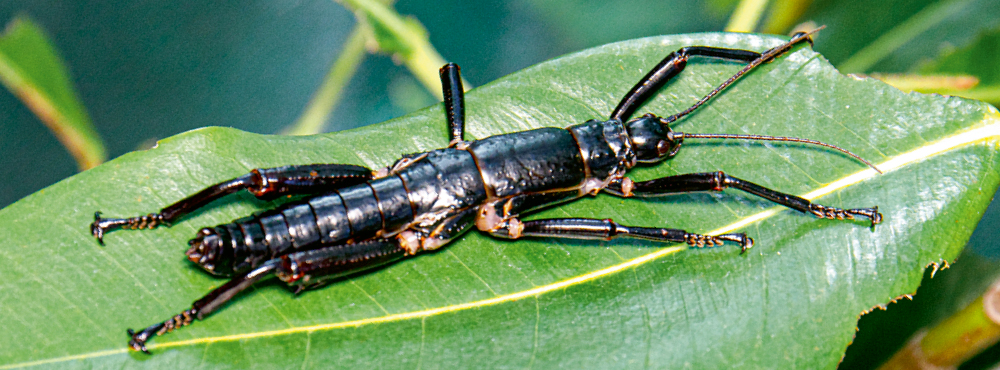
Phasmids (Phasmatodea) are an order of herbivorous, mainly warm-loving insects with bizarre shapes, which mimic their surroundings to hide from predators. Some look like dry leaves, others resemble a twig or even a piece of tree bark.
 Hatching of a Lord Howe Island stick insect nymph from an egg. Photo: Rohan Cleave, Zoos Victoria
Hatching of a Lord Howe Island stick insect nymph from an egg. Photo: Rohan Cleave, Zoos Victoria
Various body types
There are more than 3,600 species of phasmids found around the world. They inhabit all continents except Antarctica but are most abundant in tropical and subtropical regions. While some species can fly, they mostly remain on their host plants. In terms of their body type, phasmids can generally be divided into stick insects and leaf insects.
Stick insects can be extraordinarily slim and long-legged, mimicking twigs. Some of them even hold their front legs together, stretched along the body’s axis, visually extending the twig they imitate. They often sway while moving, like a stick swaying in the wind.
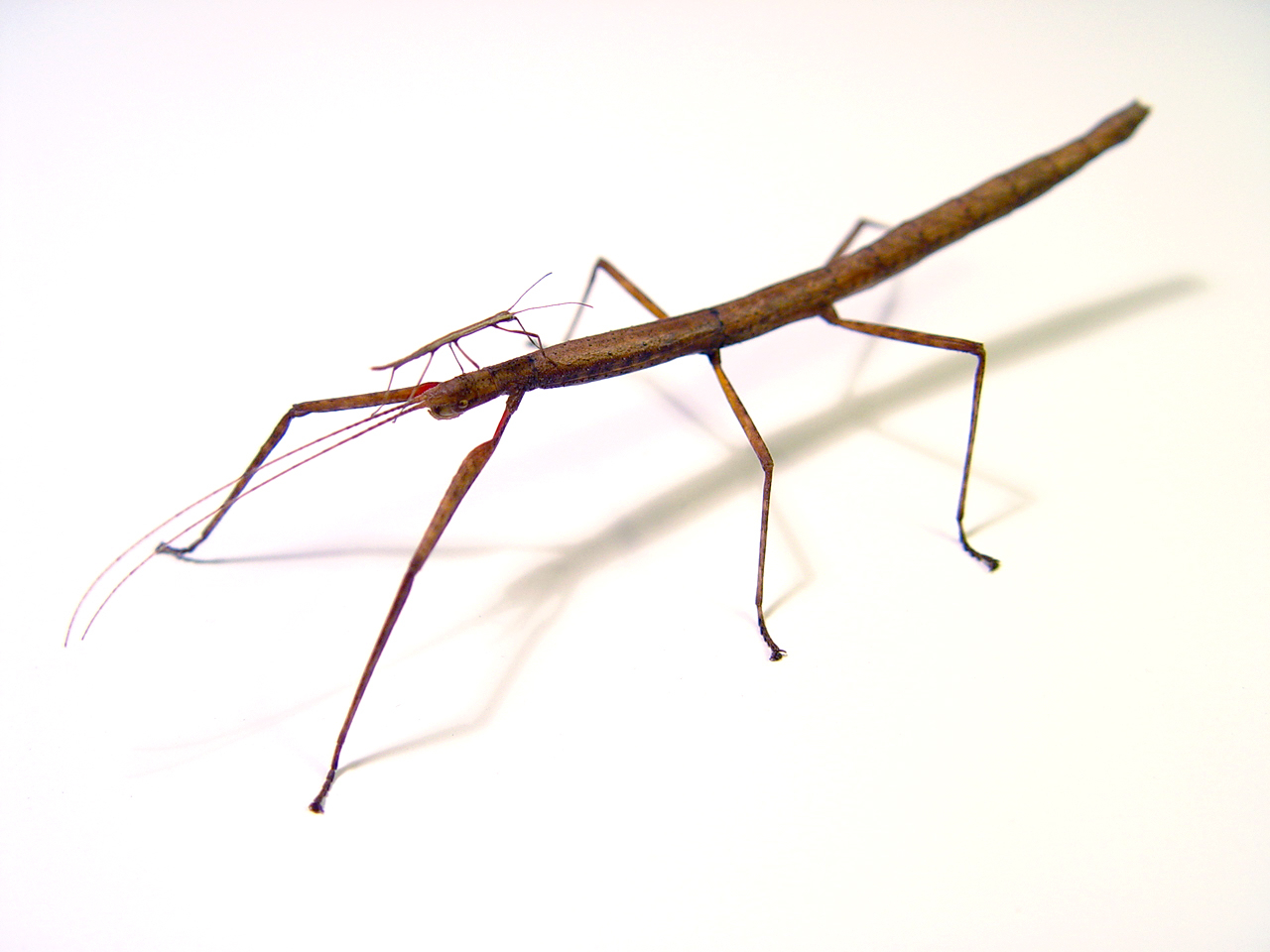
One of the stick insect species mimicking a twig both by its appearance and its behaviour. Photo: Wesley Chan (Flickr.com)
Other species of stick insects, on the other hand, are shorter and stockier, with bodies often covered in spines, horns, or lobes.
And then, there are leaf insects. They too often sway when moving, but in their case, it’s a leaf that they imitate, not a twig. Their shape, colouration and motion, mimics leaves with unbelievable precision.

Leaf insects have brought their leaf mimicry to perfection. Photo: Doublebears, CC BY-SA 4.0 (Wikimedia Commons).
Dwarfs and giants
Some phasmid species are as small as two centimetres, while others rank among the largest insects in the world. The record is held by the Asian stick insects of the genus Phobaeticus, the longest of which grows to a body length of over 35 cm (legs and antennae not included). When considering only flightless insects, the most robust is the Lord Howe Island stick insect, which you can view in the breeding facility of the zoo’s “Ball’s Pyramid” exhibit.
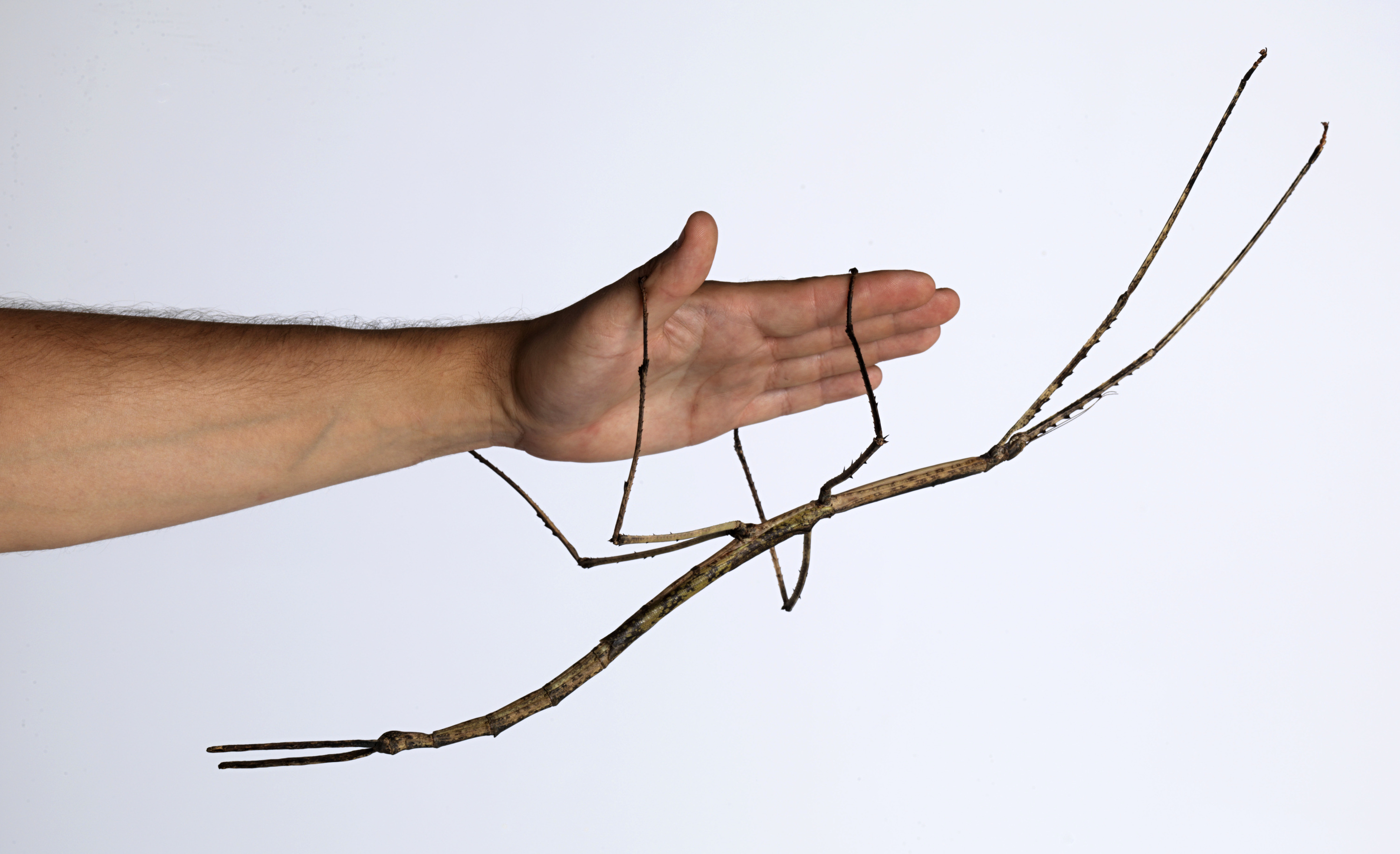
Apart from the Phobaeticus stick insects from Asia, one of the longest species is the gargantuan stick insect (Ctenomorpha gargantua) from Australia. Here, an adult female, with a total length of 56.5 cm. Photo: @chaubtu, Science Friday
Breeding
Many phasmids, including the Lord Howe Island stick insect, can reproduce in the absence of males through parthenogenesis, laying unfertilised eggs from which only female offspring hatch. Sexual reproduction is, however, more common. Nymphs that hatch from the eggs broadly resemble adults. They moult several times (seven times in Lord Howe Island stick insects) and gradually change their appearance. In some species, the number of moults is different, and for most of them, males have one moult less than females and they mature earlier. There is no pupal stage.
Lord Howe Island stick insect's ontogeny
Lord Howe Island stick insects live for around two years, spending 8 to 12 months in the nymph stage. A female lays approximately 250–300 eggs over her lifetime, exceptionally even up to 600. She lays one clutch every 7–10 days.
The eggs of the Lord Howe Island stick insect resemble plant seeds. Females lay them approximately 2.5 cm deep in the substrate and carefully smooth the soil with their abdomens. It takes 6 to 9 months for a nymph to hatch from the egg through a cap at the egg’s upper pole. Upon hatching, the nymph is 20 mm long, very slender, and bright green, which camouflages it well among plant greenery.

On the left: The first eggs of the Lord Howe Island stick insect travelled to Prague Zoo from Bristol. Photo: Petr Hamerník, Prague Zoo
On the right: Hatching of the Lord Howe Island stick insect nymph from an egg. Photo: Rohan Cleave, Zoos Victoria
As the nymph grows, it moults several times, shedding its old cuticle and gradually changing its appearance. The stages between two moults are called instars and they are often denoted by the letter L (L1, L2, L3, …) in breeding facilities.
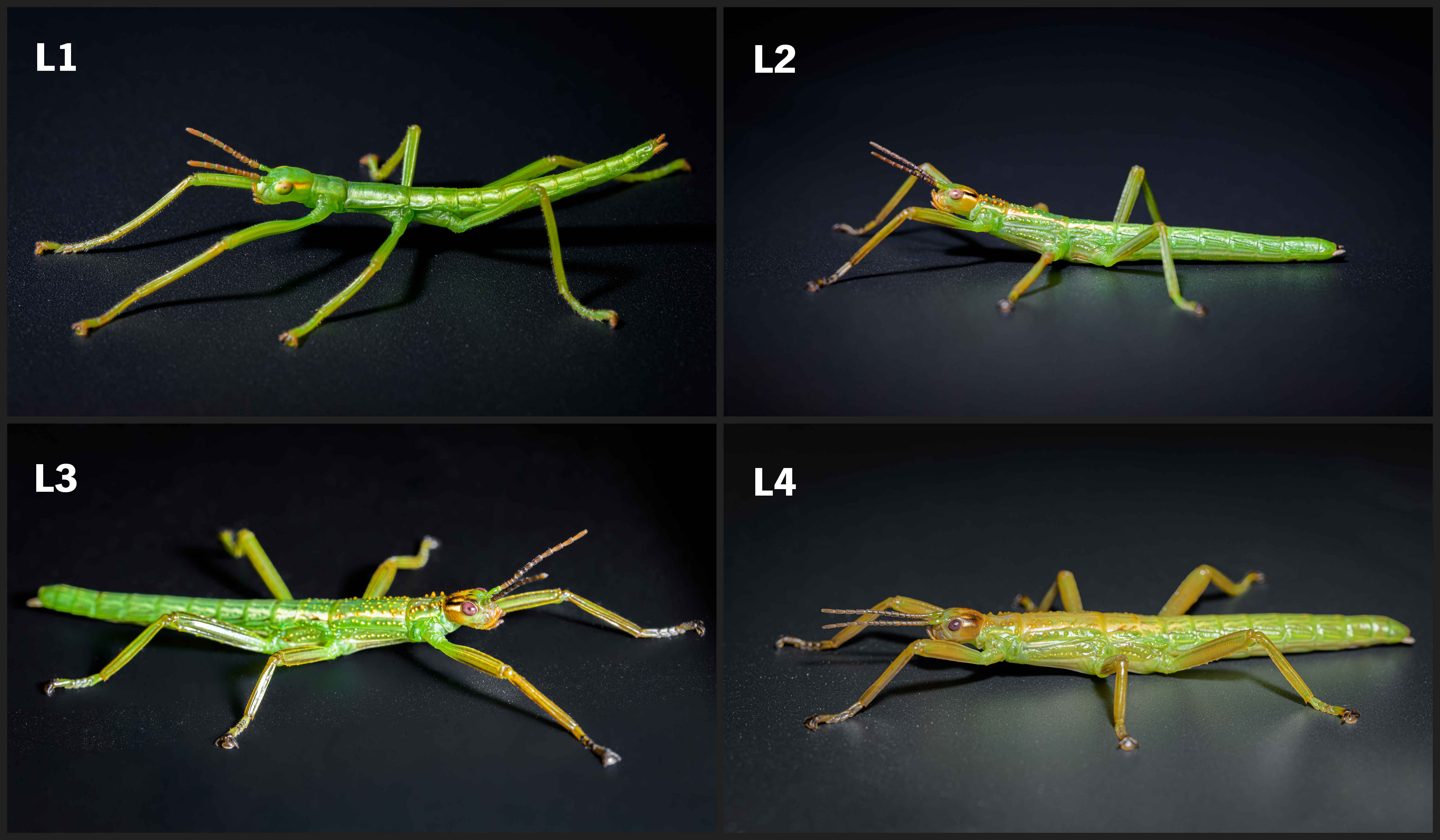
Nymphs of the first four instars (L1–L4), hatched in Ball’s Pyramid exhibit at Prague Zoo. Photo: Petr Hamerník, Prague Zoo
The 5th instar nymph is already quite robust, and instead of green, it is orange brown shortly after moulting, gradually changing its colour to dark brown. The 6th instar nymph already strongly resembles adults, is even more robust, larger and almost black.
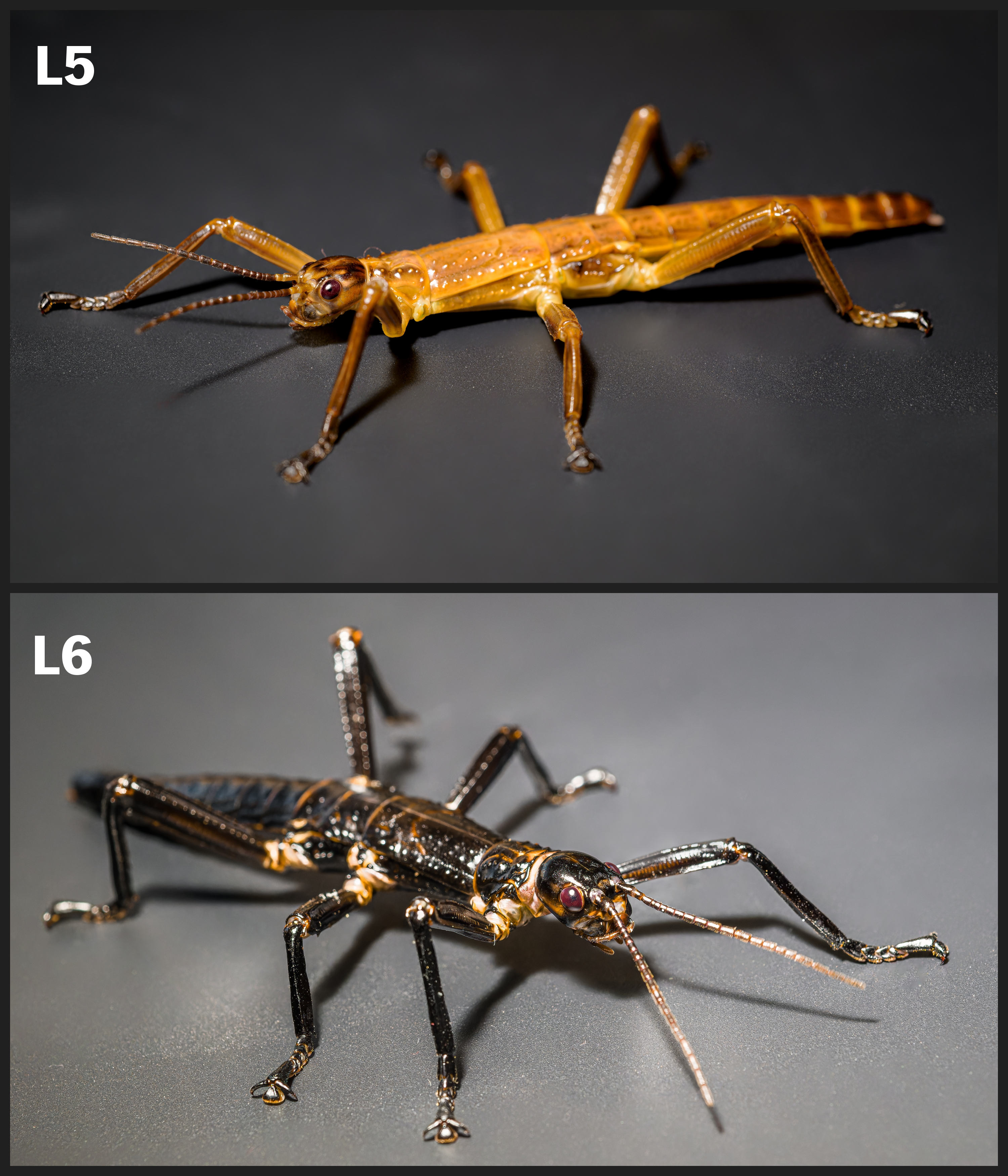
Nymphs of the higher instars (L5–L6) are already more robust and start resembling adult stick insects. Photo: Petr Hamerník, Prague Zoo
Adults, called imagos, are glossy black. Males have large, spiny thighs, their abdomens are blunt, and they can grow to body lengths of 12 cm, while females have slender thighs, with abdomens tapering to a point, and grow up to 15 cm of body length.
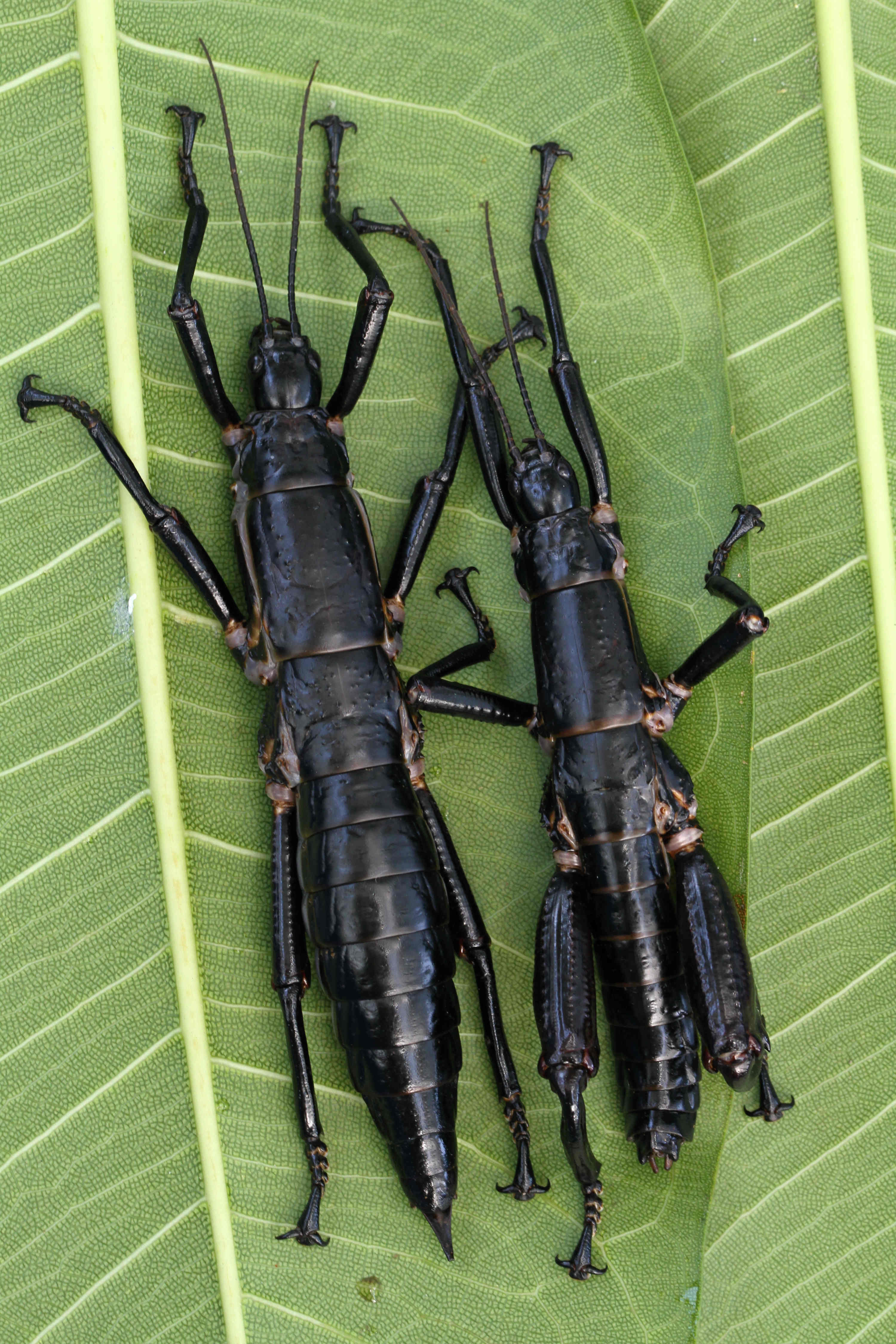
Adult pair of Lord Howe Island stick insect (Dryococelus australis), female on the left, male on the right. Photo: Rohan Cleave, Zoos Victoria
How moulting occurs
Before moulting, the stick insect finds a suitable place where it has enough space beneath it and hangs upside down. It then begins to gradually emerge from its old cuticle, much like a butterfly emerging from its pupa. The entire body, including the legs and antennae, must pass through a relatively small crack in the old cuticle that opens just behind the head.
To ensure that this delicate and challenging process is successful, a high level of air humidity is necessary. Without it, the nymph risks getting stuck in the old cuticle and either dying or losing one or more limbs that it cannot free. Fortunately, stick insects have a great regenerative ability and, within three moults, they can replace lost legs or antennae.

The Lord Howe Island stick insect (Dryococelus australis) originally inhabited Lord Howe Island, lying in the Tasman Sea, at the southern edge of the Pacific Ocean, approximately 700 km northeast of Sydney. It is crescent-shaped, formed from an eroded volcano, and measures 12 km in length and 3 km in width.
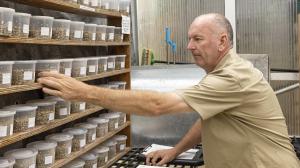
After the discovery of the live Lord Howe Island stick insects on Ball’s Pyramid in 2001, it was decided to establish a conservation breeding programme for the species. Over the years, a total of five specimens were collected from the sea stack. Thanks to the dedication and immense efforts of conservation teams working to...
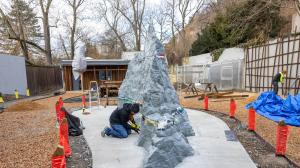
In the unique Ball’s Pyramid exhibit, you will see both the Lord Howe Island stick insects themselves, which were long considered an extinct species, and a scaled-down model of the rocky sea stack where they survived. Discover the story of faith, enthusiasm, and immense effort that has been put into saving a species that...
ZOOPRAHA.CZ
Contacts
- The Prague zoological garden
U Trojskeho zamku 120/3
171 00 Praha 7
Phone.: (+420) 296 112 230 (public relations department)
e-mail: zoopraha@zoopraha.cz
Others


